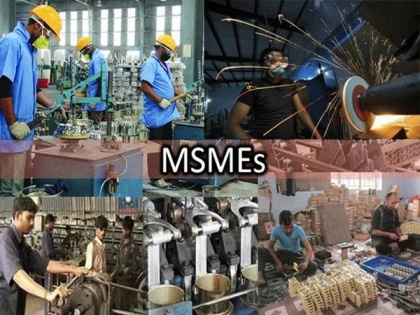Union Budget gives booster dose to India's export sector
By ANI | Published: February 1, 2022 11:22 PM2022-02-01T23:22:00+5:302022-02-01T23:30:02+5:30
The Budget has given a booster dose to India's export sector which has never had it so good - riding high on a 38.91 percent surge in December to reach USD 37.81 billion - the highest - ever monthly figure - and putting India well on track to achieve the USD 400-billion merchandise exports target for the fiscal.

Union Budget gives booster dose to India's export sector
The Union Budget has given a booster dose to India's export sector which has never had it so good - riding high on a 38.91 per cent surge in December to reach USD 37.81 billion - the highest ever monthly figure and putting India well on track to achieve the USD 400-billion merchandise exports target for the fiscal.
According to the preliminary trade data for January 2022, India's merchandise export in the month increased by 23.69 per cent to USD 34.06 billion over USD 27.54 billion in January 2021.
Now with the budget's provision of additional credit to over 130 lakh MSMEs under the Emergency Credit Line Guarantee Scheme (ECLGS) scheme, its extension till March 2023 and expansion of guarantee cover by Rs 50,000 crore to a total cover of Rs 5 lakh crore, India's outbound shipments are set on a more ambitious trajectory of growth, says President, Federation of Indian Export Organisations (FIEO), A Sakthivel.
"The ECLGS scheme has benefited the MSME during the peak covid time and its extension will further infuse life in the businesses when recovery is on the card," the FIEO President said.
In a radical shift, the Budget proposes to replace the Special Economic Zone Act with new legislation to meet the requirement of a dynamic sector of international trade and bring in transparent and risk-based customs administration of SEZ to make them engines of economic growth and employment creation.
The proposal to amend the SEZs Act has been long needed by the industry to enable India's export competitiveness and also improve the utilization of assets under SEZs, according to Mohammad Athar, Partner and Leader - Industrial Development, PwC India. "It remains to be seen how the new legislation aligns with the WTO requirements, meets the industry's supply chain demands, and promotes SEZs in new and upcoming sectors," adds Athar.
While the impact on the ICT industry could be gauged only after looking at the fine print of the Budget, according to Sandeep Narula, Chairman, Electronics and Computer Software Export Promotion Council (ESC), the announcement by the Finance Minister to re-calibrate customs duties to provide a graded rate structure and duty concessions to help boost electronic products, is an encouraging one.
The Budget also gives sectoral relief through proposed phasing out of more than 350 from customs duty exemption to promote 'Make in India and Atmanirbhar Bhara, accompanied by graded duty rate structure to boost domestic electronics manufacturing and reduced customs duty on inputs used in shrimp aquaculture.
Exporters will benefit from a reduction in duty on cut and polished diamonds, gemstones, certain chemicals, and an extension of zero duty on steel scrap to benefit the exporters. Similarly, restoration of the facility of duty-free import of trimming and embellishments for exports will help the apparel, textiles, leather garments and leather footwear, handicrafts, sports goods, and other sectors.
As a further impetus, underlined by Finance Minister Nirmala Sitharaman, the seven engines of growth under the PM Gati Shakti project will help to reduce the logistics cost and time of Indian exports significantly thereby imparting added competitiveness to exports.
The setting up of 100 cargo terminals will facilitate exports and imports as logistics challenges today are the biggest stumbling blocks. The Budget's focus on skilling through the "digital ecosystem for skilling and livelihood through online training will be very handy for exports as it will help in qualitative manufacturing and consistency in production.
( With inputs from ANI )
Disclaimer: This post has been auto-published from an agency feed without any modifications to the text and has not been reviewed by an editor
Open in app